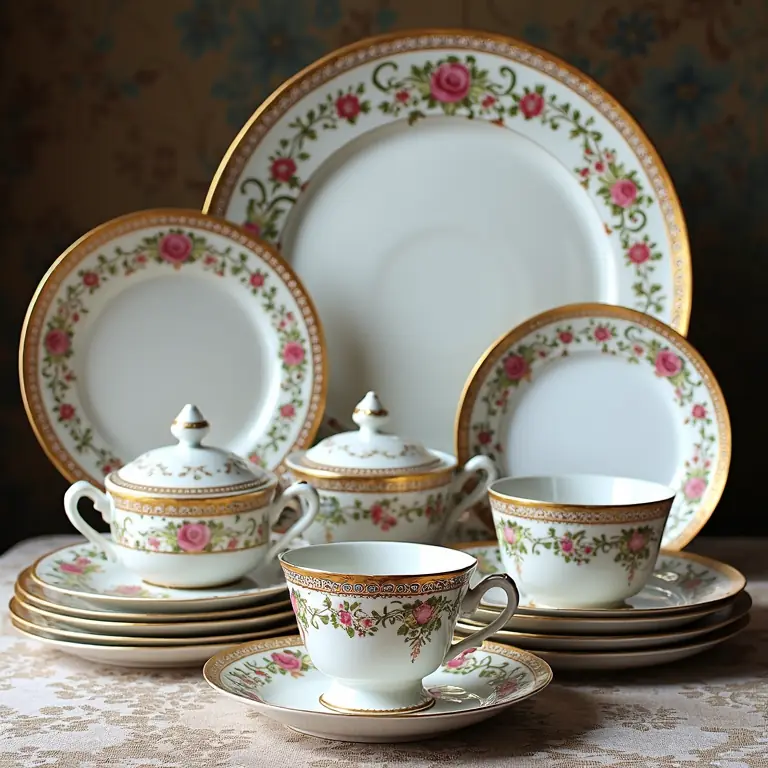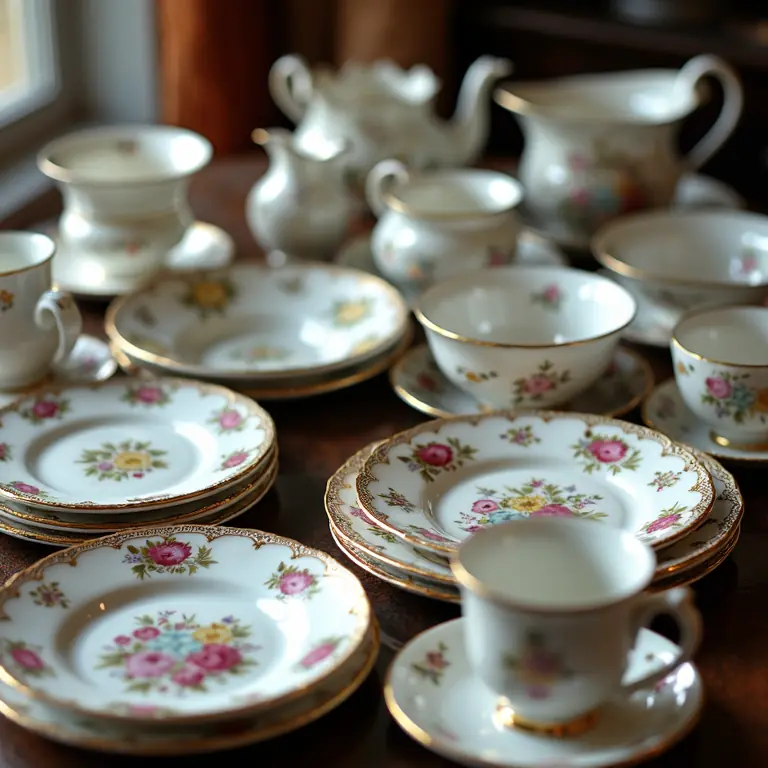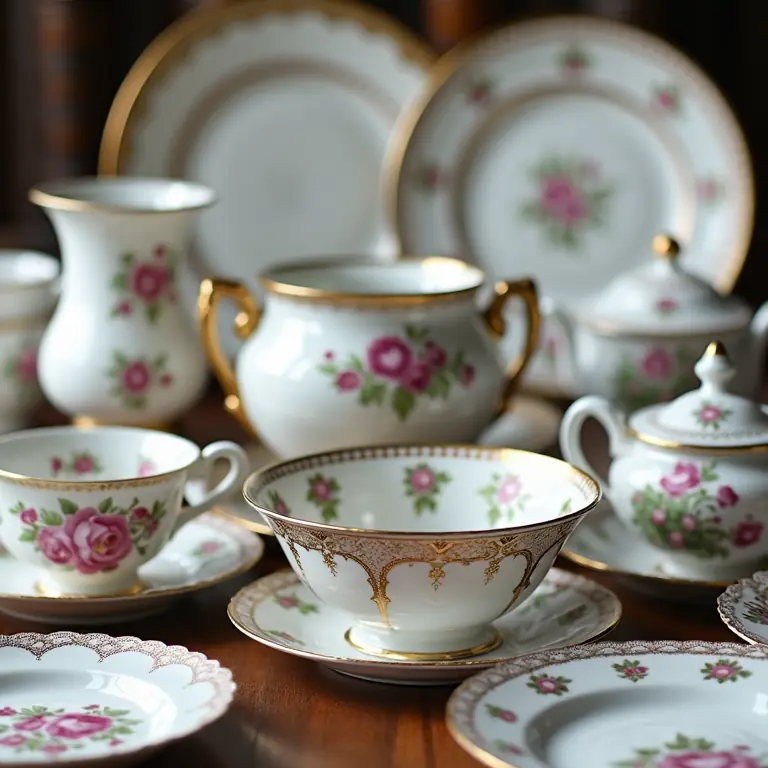Decode Your Dishes: A Friendly Guide to Identifying Antique China Patterns
Do you have a beautiful set of dishes tucked away, perhaps inherited from a grandmother, or discovered at an estate sale? Are you curious about their history, their maker, and their value? Identifying antique china patterns can seem daunting, but with a little knowledge and patience, you can unlock the story behind your tableware. This guide will provide you with a friendly, step-by-step approach to decoding your dishes, covering everything from basic terminology to advanced pattern recognition.
Why Identify Your Antique China?
There are several compelling reasons to identify your antique china. Firstly, it’s about history. Each pattern tells a story about the era in which it was created, the social customs of the time, and the artistry of the potter. Secondly, it’s about value. Knowing the maker and pattern can significantly impact the resale value if you ever decide to sell or insure your collection. Finally, it’s about appreciation. Understanding the craftsmanship and history will deepen your enjoyment of these beautiful objects.
Understanding Basic Terminology
Before we dive into pattern identification, let’s familiarize ourselves with some key terms:
- China/Porcelain/Bone China: These terms refer to the material. Porcelain is made from a specific type of clay fired at high temperatures, resulting in a hard, translucent material. Bone china includes bone ash in the mixture, making it even more durable and translucent.
- Pattern: The decorative design on the china.
- Mark/Backstamp: The maker’s mark, usually found on the underside of the piece. This is your primary clue!
- Shape: The overall form of the piece (e.g., coupe, salad plate, teacup).
- Rim: The edge of the plate or cup. Rim styles can be indicative of the age and maker.
- Firing Date/Date Mark: Sometimes, a date or date range is included in the backstamp.
- Impressed Mark: A mark that is raised or indented into the china.
- Painted Mark: A mark that is painted onto the china.
Step 1: The Backstamp – Your First Clue
The backstamp is the most important starting point. It’s like a fingerprint for your china. Here’s how to approach it:

- Locate the Mark: Carefully examine the underside of your pieces. Marks are usually found on the base, but can sometimes be on the underside of lids or handles.
- Photograph the Mark: Take clear, well-lit photos of the backstamp from multiple angles. This will be essential for research.
- Identify the Maker: Use online resources (see “Resources” section below) or books to identify the maker. Websites like Replacements, Ltd. (though a commercial site, it has a massive database of marks) and The Potteries Museum & Art Gallery are excellent starting points.
- Note the Mark’s Style: Is it impressed, painted, or a decal? The style of the mark itself can provide clues about the age of the piece.
Step 2: Common Makers and Their Marks
Here’s a quick overview of some common antique china makers:
- Spode (England): Known for its blue and white transferware, particularly the “Blue Willow” pattern. Marks vary considerably over time.
- Wedgwood (England): Famous for its Jasperware (unglazed stoneware) and distinctive neoclassical designs.
- Royal Doulton (England): Produced a wide range of china, from everyday tableware to collectible figurines.
- Shelley (England): Known for its delicate floral patterns and vibrant colors.
- Limoges (France): Highly regarded for its fine porcelain, often decorated with hand-painted designs.
- Haviland (France): Another prominent Limoges manufacturer, known for its elegant patterns.
- Noritake (Japan): Became popular in the early 20th century, producing a variety of patterns, often featuring hand-painted designs.
Step 3: Decoding the Pattern
Once you’ve identified the maker, the next step is to identify the specific pattern. This can be more challenging, but here’s how to approach it:
- Describe the Design: Be as specific as possible. What colors are used? What motifs are present (flowers, landscapes, geometric shapes, etc.)? Is it hand-painted, transferware, or a decal?
- Look for Pattern Names: Sometimes, the pattern name is included in the backstamp.
- Search Online Databases: Use websites like Replacements, Ltd. and others to search for patterns based on the maker and your description. You can often upload a photo of the pattern for assistance.
- Consult Pattern Guides: There are numerous books dedicated to identifying china patterns. These can be invaluable resources.
- Consider the Shape: The shape of the piece can help narrow down the possibilities. Different shapes were popular at different times.
- Check for Variations: Patterns often have variations. Slight differences in color, detail, or the presence of a particular element can indicate a different version of the same pattern.
Step 4: Dating Your China
Determining the age of your china can be tricky. Here are some clues:

- Backstamp: The backstamp itself can often provide a date range. Marks changed over time as companies were bought and sold, or as manufacturing techniques evolved.
- Pattern Registration Marks: Some patterns were registered with the British Registry of Designs. These marks include a date code.
- Style of Decoration: Certain styles of decoration were popular during specific periods. For example, Art Deco patterns were common in the 1920s and 1930s.
- Material: The type of china can also provide clues. Bone china became more popular in the late 18th and early 19th centuries.
- Manufacturing Techniques: The way the china was made – hand-painted versus transferware, for example – can indicate its age.
Specific Pattern Types to Recognize
Here’s a closer look at some common pattern types:
- Transferware: A design printed onto the china from an engraved copperplate. This was a popular and relatively inexpensive method of decoration in the 19th and 20th centuries. Blue and white transferware is particularly common.
- Hand-Painted: Designs applied directly to the china with a brush. Hand-painted patterns are typically more valuable than transferware.
- Floral Patterns: A classic and enduring style. Floral patterns can range from delicate sprigs to elaborate bouquets.
- Chinoiserie: A style inspired by Chinese art and design. Often features pagodas, dragons, and floral motifs.
- Gilded Patterns: Patterns decorated with gold. Gilded china is typically more formal and luxurious.
- Geometric Patterns: Patterns featuring geometric shapes. These were particularly popular during the Art Deco period.
Resources for Identification
Here are some helpful resources:
- Replacements, Ltd.: A massive database of china patterns and marks.
- The Potteries Museum & Art Gallery: Information on British pottery makers.
- GotAntiques.com: A marketplace with a pattern search function.
- Antique Marks and Collectors Guides: Books specializing in identifying china marks and patterns.
- Online Forums & Communities: Connect with other collectors and experts online.
Beyond Identification: Caring for Your Antique China
Once you’ve identified your china, it’s important to care for it properly to preserve its beauty and value. Here are a few tips:
- Hand Wash Only: Avoid putting antique china in the dishwasher.
- Use Gentle Soap: Avoid harsh detergents.
- Avoid Abrasive Cleaners: These can damage the glaze.
- Handle with Care: Antique china can be fragile.
- Store Properly: Store your china in a safe place, wrapped in acid-free tissue paper.
Let’s Branch Out – Related Guides
Enjoying the meticulous nature of restoring and identifying antiques? Perhaps you’d like to explore other crafting hobbies! Consider these friendly guides:
- Build a Backyard Worm Farm: A Friendly Guide to Vermicomposting – Embrace sustainability and create nutrient-rich compost!
- Build a Better Bookmark: A Friendly Guide to Leather Tooling Basics – Learn the art of leather crafting and create personalized bookmarks.
- Assemble Your Aromas: A Friendly Guide to Blending Essential Oils – Discover the power of aromatherapy and create custom blends.
Final Thoughts
Identifying antique china patterns is a rewarding journey. It requires patience, research, and a keen eye for detail. Don’t be afraid to ask for help from experts or fellow collectors. With a little effort, you can unlock the stories hidden within your dishes and appreciate their beauty and history for years to come. Happy decoding!


Discussion about this post